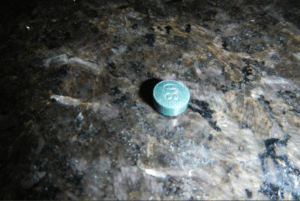Hazmat Cleaning Company Describes Conditions Inside A House Used As A Fentanyl Pill Mill

This legitimate looking OxyContin is actually a deadly counterfeit made with fentanyl. The residue from the mass production of counterfeits like these is so deadly that specialty hazmat units are required to clean it up.
Global News reported on the hazmat clean-up efforts at a house in Edmonton, Canada, one of four homes used for the production of fake pills made with fentanyl. When Edmonton police announced the bust and seizure of 130,000 fake pills made with fentanyl, they stated that this was the largest fentanyl pill seizure in Canadian history. In the same month, CBCNews reported that Alberta Health Services placed two orders on the house. The first said it was unfit for human habitation. The second required the homeowner to contract with a professional hazardous cleaning and remediation company to clean-up the property.
Mayken Hazmat Solutions received the contract. Owner and president Dean May described the conditions of the house and the safety precautions his crew went through to make the home fit for humans again. “Downstairs in the basement, where they were actually preparing the product and pressing the pills… there was green powder, green dust all over everything in the basement.” In addition to items like air mattresses, workbenches, and collapsible tables, May’s team found drug paraphernalia and even some pills.
To keep his team safe, everyone wore double suits and double gloves. Disposable booties were put on top of their rubber boots, and tape covered all the seams. Full-face respirators were a requirement, and naloxone kits were kept onsite in case of any accidental exposures. Upon arrival, May and his team vacuumed up all the dust, cleaned and disposed of all the furniture, washed the walls, removed the carpet and neutralized the fentanyl. When Mayken Hazmat Solutions finishes the clean-up, the property will be inspected to ensure it is safe.
May said his company has seen an increase in the number of calls they get to clean-up houses that had been used as drug labs. They used to receive a call once every month or two, but now do two a month, which account for roughly 40% of the business.
Since PSM published this article in 2017, an increasing number of experts have agreed that it is not possible for a person to suffer fentanyl poisoning through passive exposure.